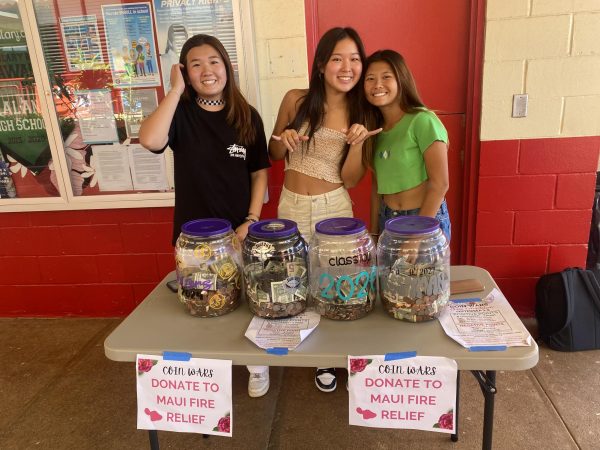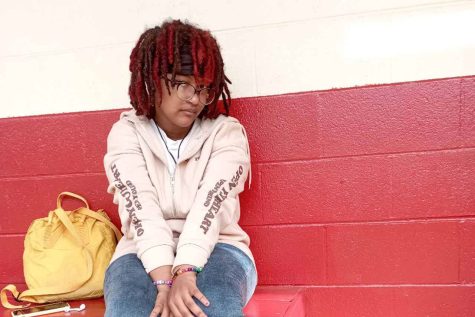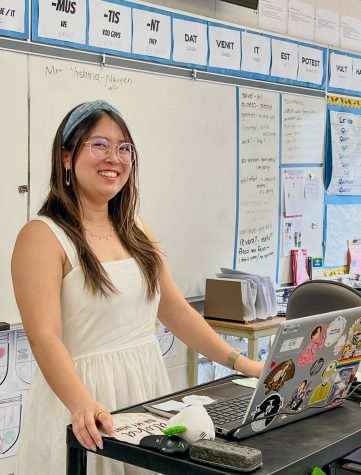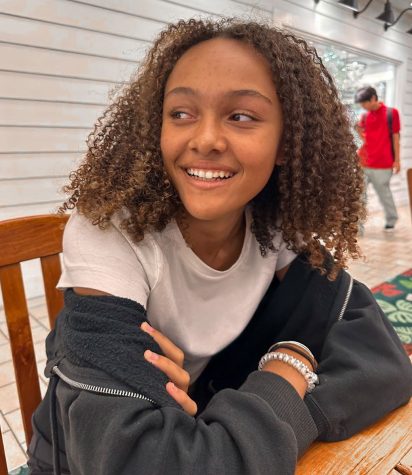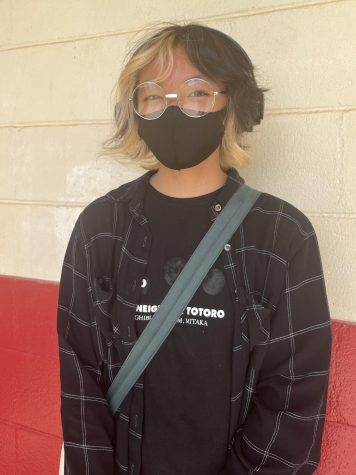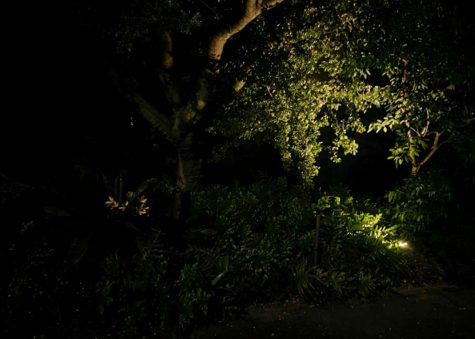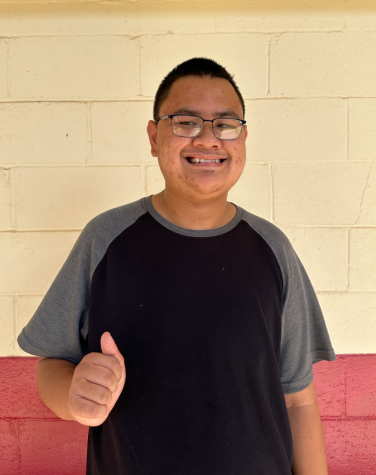What are students saying about Distance Learning?
The Hawaii Department of Education announced on Thursday, Aug. 27, that all public schools would “continue the Learn from Home phase of distance learning for most students statewide” for the first quarter of the 2020-2021 academic year, which ends on Oct. 2.
Three weeks into the quarter, Kalani students report a variety of benefits and challenges of distance learning.
I’ve been continuously stressed for longer times with online school.
— Malia Korzybski
Limited social interaction is the most reported consequence of distance learning. Students and teachers connect through the online video conferencing program Google Meets; still, many say that bonding through a screen is challenging.
One challenge is that the majority of students choose to keep their cameras off during virtual lessons.
“I personally don’t turn on my camera,” Malia Korzybski (10) explained. “I just find it weird because not everyone turns on their camera, and if you’re one of the few people [with your camera on], I feel like everyone’s just staring at you.”
Camera use is a common concern among students.
“I’m not comfortable with the people around me in the Meets because I don’t really know them,” Rin Isoe (9) admitted. “If I actually met them in person, I would be more comfortable showing my face.”
Teachers find it difficult to teach when students have their cameras off.
“As I am delivering instruction, a lot of how I decide how much (or how little) time to spend on a topic depends on the feedback I get from the students,” 9th grade Kalani social studies teacher Racer Moody wrote. “Feedback can be verbal, but also it can be simple facial gestures that show whether students are comprehending or are confused.”
However, teachers say they understand students’ perspectives and their reluctance to turn on cameras.
“I do wish most if not all students would turn ON their cameras because it feels better to see faces that you’re talking to and makes us feel like we ‘know’ you,” Kalani Spanish teacher Arturo Morales said over email. “BUT [Morales’ emphasis] when I put myself in the students’ shoes, I understand that there may be MANY reasons some students do not want to turn on their cameras.”
Ninth graders report additional difficulties with classes conducted entirely through video conferencing software.
Isoe mentioned that a considerable disadvantage of distance learning for herself, as a freshman, is not being able to meet new people.
“We’re not familiar with our classmates and our teachers, so it makes us more uncomfortable,” she stated.
Isoe said that getting to know her peers is even more challenging when you can’t see their faces.
In addition to the challenges around cameras, students say that distance learning has increased stress levels.
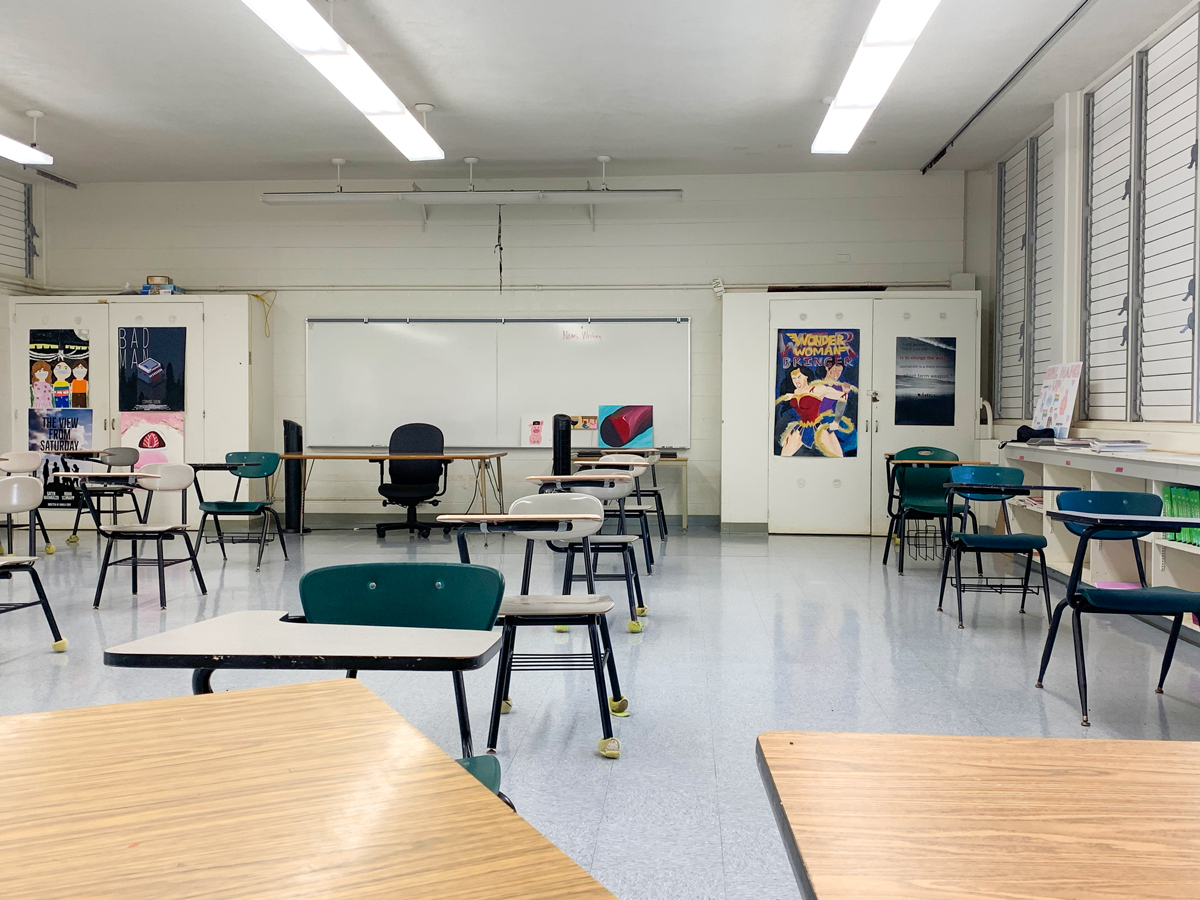
“I think they’re higher because you’re kind of just relying on yourself to get work done,” Isoe said.
She explained that there is it’s even harder for shy students. One-on-one conversations with the teacher aren’t possible when an online class is in session. During online lessons, students hear everyone else’s questions; there’s no privacy.
“I’ve been continuously stressed for longer times with online school, but at a lower level [than in-person school],” Malia Korzybski said (10). She explained that this could be because we haven’t been in school for very long and are not at a point yet where there’s an overload of work on our backs.
Despite the many downsides of distance learning, students also report some benefits of working from home.
Distance learning gives students more freedom over their time and allows them to work in an ideal environment.
“You can learn at your own pace and stay in the comforts of your own home while doing so,” Sarah Mishina (10) said.
Isoe explained that learning from home helps develop independence, something that all Kalani students will need after leaving high school.
The DOE has recently reported that starting the second quarter, Oct. 12, the Department will be using a new benchmark to determine when schools can reopen to in-person learning. According to these new guidelines, if there are 5.1 or fewer Covid-19 cases per 10,000 residents on Oahu, students will return to school in-person.
However, it is still uncertain as to when this will be. Until then, students and teachers will have to make the most of and adapt to this new learning model.

Lily is a senior and will be writing all the news you read in a few years-- if not sooner.

